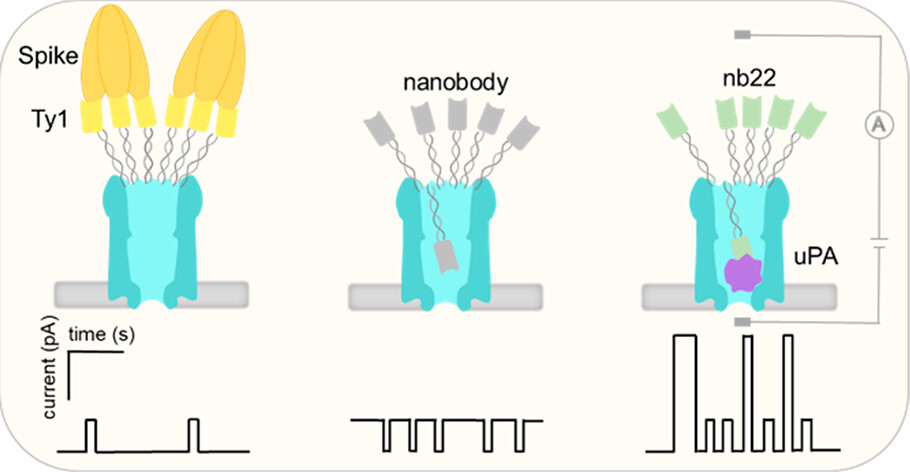Tiny nanopores can contribute to faster identification of diseases
Researchers from Aarhus University are behind a new method for detecting important proteins in, for example, a blood sample. By using tiny nanopores and nanobodies, they have identified markers that are indicators of COVID-19 and breast cancer, respectively, with impressive precision and sensitivity. With this technology, the future may hold fast and accurate disease diagnosis using a simple blood test. The discoveries could bring us closer to improved healthcare.

In a collaboration with Groningen University, Professor Jørgen Kjems and his research group at Aarhus University have achieved a remarkable breakthrough in developing tiny nano-sized pores that can contribute to better possibilities for, among other things, detecting diseases at an earlier stage. Their work, recently published in the scientific journal ACS Nano, shows a new innovative method for finding specific proteins in complex biological fluids, such as blood, without having to label the proteins chemically. The research is an important milestone in nanopore technology, and could revolutionise medical diagnostics.
Nanopores are tiny channels formed in materials, that can be used as sensors. The researchers, led by Jørgen Kjems and Giovanni Maglia (Groningen Univ.), have taken this a step further by developing a special type of nanopore called ClyA with scanner molecules, called nanobodies, attached to it. These nanobodies, derived from antibodies, are capable of recognizing different proteins with astonishing accuracy. In this study, the researchers attached nanobodies to ClyA, using a DNA adapter. By using a series of nanobodies, they were able to create many different nanopore sensors, which could detect a variety of proteins of different sizes.
The research team created nanopores with specialized nanobodies attached, which have the ability to detect the Spike protein of SARS-CoV-2 (the virus that causes COVID-19) and a protein marker for breast cancer called urokinase-type plasminogen activator (uPA), respectively. By measuring changes in electrical currents that are caused by the presence of these proteins, the researchers can find and identify individual proteins and even determine their concentrations. What makes this breakthrough even more remarkable is that the nanopores remained highly accurate and sensitive even when tested with complex samples like blood.
Although the nanopores are invisible to the naked eye, the signficance of this research is palpable. The existing technologies already allowed the integration of nanopores into a portable device that can utilise the nanopores' ability to scan liquids for specific molecules. Therefore, we can envision a future where patients can rapidly and accurately detect diseases like cancer or infectious diseases with a simple blood test. This could lead to earlier interventions, improved treatment outcomes, and overall improved healthcare.
Although further studies and validation are needed before this technology becomes widely available, the collaboration between these two universities brings us one step closer to this reality. The breakthrough exemplifies the power of scientific collaboration and innovation in transforming healthcare.
Additional information | |
We strive to ensure that all our articles live up to the Danish universities' principles for good research communication(scroll down to find the English version on the web-site). Because of this the article will be supplemented with the following information: | |
Funding | This work was funded by the Villum Foundation to the Biomolecular Nanoscale Engineering Center (BioNEC) (grant 18333), the Danish National Research Foundation to the Center for Cellumar Signal Pattens (CellPAT) (grant DNRF 135), and Chinese Scholarship Council (CSC) grant. |
Conflict of interests | None |
Read more | The scientific article in ACS Nano: Specific Detection of Proteins by a Nanobody-Functionalized Nanopore Sensor |
Contact | Professor Jørgen Kjems |